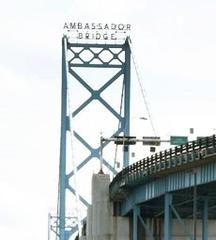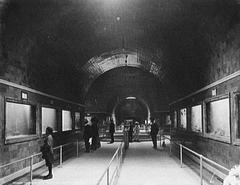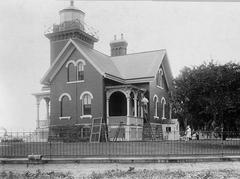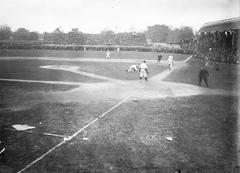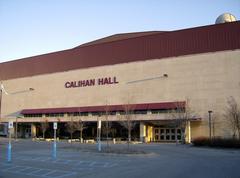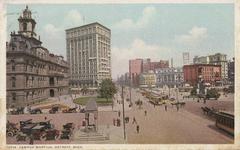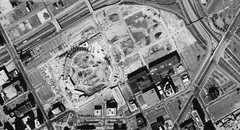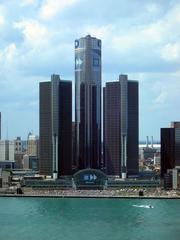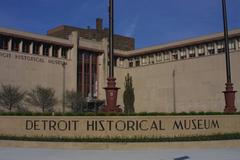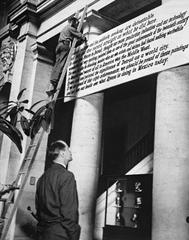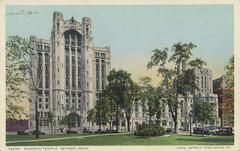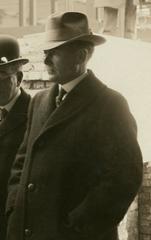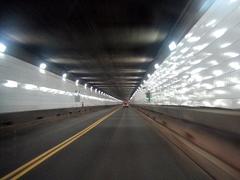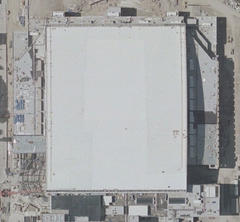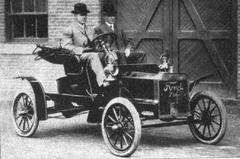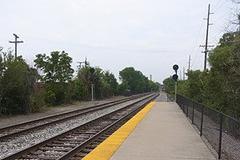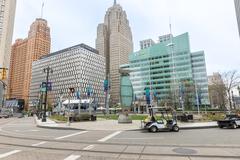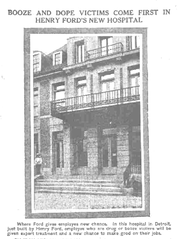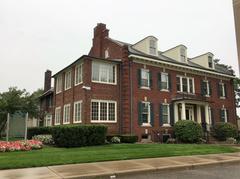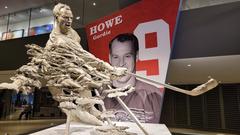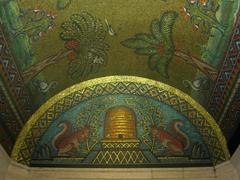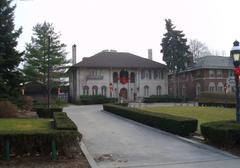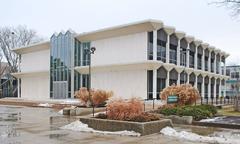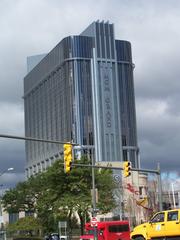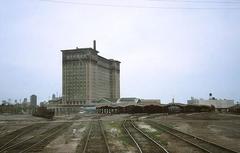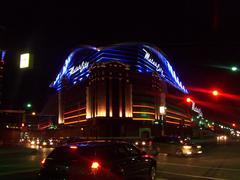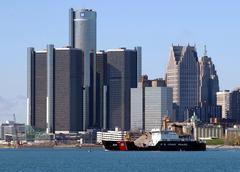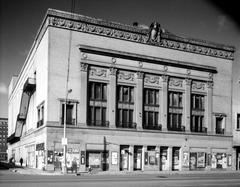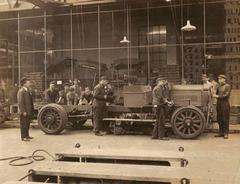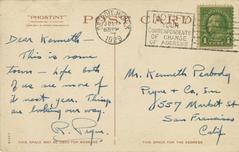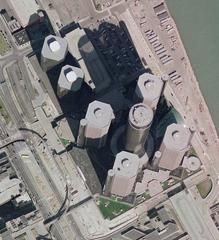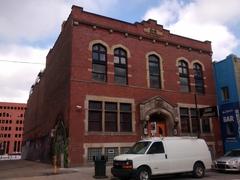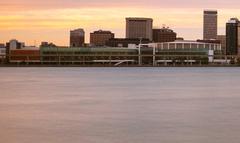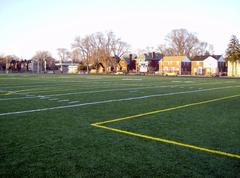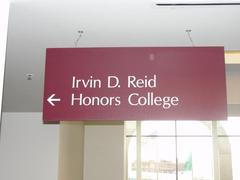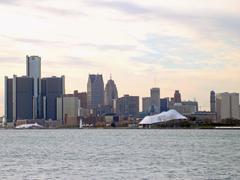Cathedral Church of St. Paul Detroit: Visiting Hours, Tickets, and Historical Significance
Date: 04/07/2025
Introduction
The Cathedral Church of St. Paul in Detroit stands as a testament to the city’s rich religious, architectural, and cultural legacy. Founded in 1824 as Michigan Territory’s first Episcopal and Protestant congregation, it has evolved into a Neo-Gothic masterpiece designed by Ralph Adams Cram, and today serves as the mother church of the Episcopal Diocese of Michigan. This guide provides a comprehensive overview of the cathedral’s history, architecture, community role, and practical visiting information—including hours, ticketing, accessibility, and nearby attractions—making it indispensable for visitors, architecture enthusiasts, and those exploring Detroit’s historical fabric.
For further historical context and architectural highlights, see Historic Detroit, Detroit Historical Society, and the cathedral’s official website.
Table of Contents
- Introduction
- Early Foundations and Parish Origins
- Construction of the Present Cathedral
- Architectural Significance and Artistic Highlights
- Notable Events and Community Role
- Visiting the Cathedral: Hours, Tickets, and Accessibility
- Nearby Attractions and Travel Tips
- Preservation and Recognition
- Frequently Asked Questions (FAQ)
- Conclusion & Call to Action
- References
Early Foundations and Parish Origins
Established in 1824, the Cathedral Church of St. Paul was Detroit’s first Episcopal and Protestant congregation, chartered by Territorial Governor Lewis Cass and led by Rev. Richard Fish Cadle (Historic Detroit; Detroit Historical Society). Its original church was located on Woodward Avenue, later moving in 1851 to accommodate a growing congregation. St. Paul’s played a foundational role in the creation of the Episcopal Diocese of Michigan and helped establish other landmark parishes in Detroit (Detroit Cathedral).
Construction of the Present Cathedral
The cathedral’s current structure at 4800 Woodward Avenue, designed by Ralph Adams Cram, was constructed from 1907 to 1911 and is renowned for its authentic Neo-Gothic design (Wikipedia; Historic Detroit). Cram’s vision was to invoke the architectural spirit of medieval English cathedrals, using traditional masonry methods without steel support. Although the planned central tower was never completed, the building is recognized as one of Cram’s greatest works and a cornerstone of American Gothic Revival architecture (Detroit1701.org).
Architectural Significance and Artistic Highlights
Vision and Design Philosophy
Ralph Adams Cram’s approach emphasized authenticity, with a cruciform layout, soaring stone pillars, and load-bearing masonry evocative of 14th-century English Gothic cathedrals (UMich Finding Aids). The exterior is defined by a narrow gabled façade, pointed-arched entrance, rose window, and intricate stonework—features that create dramatic visual effects throughout the day (SAH Archipedia).
Interior and Artistry
Inside, the cathedral is distinguished by its 36 stained glass windows in the clerestory, depicting Genesis’ creation narrative through an interplay of darkness and light (Detroit1701.org). Additional highlights include 12 Spanish windows flanking the sanctuary, carved woodwork by Joseph Kirchmayer, and Pewabic Pottery floors adorned with Christian symbols. The nave’s vertical emphasis, decorative capitals, and luminous stained glass create an atmosphere of reverence and awe.
Music and Living Tradition
The cathedral’s choral and organ traditions are celebrated through regular services, concerts, and the “Music at Mid-day” recital series (Music at Mid-day), featuring both in-person and livestreamed events.
Notable Events and Community Role
Historical Moments
St. Paul’s has hosted significant moments in Detroit’s civic and religious history, including the 1947 funeral of industrialist Henry Ford (Historic Detroit). Its proximity to Wayne State University, the Detroit Institute of Arts, and the Detroit Public Library makes it a hub for spiritual and civic engagement (Detroit Cathedral).
Outreach and Social Mission
The cathedral’s outreach initiatives include Williams Pavilion, providing housing for low-income seniors, and the Cathedral Choir School. It helped found Crossroads, a social service agency serving Detroit’s vulnerable populations. Regular fellowship, education programs, and community partnerships strengthen its role beyond worship, making it a vital part of Detroit’s social fabric (Detroit Cathedral).
Visiting the Cathedral: Hours, Tickets, and Accessibility
- Address: 4800 Woodward Avenue, Detroit, MI 48201
- Visiting Hours: Monday–Saturday: 10:00 a.m.–4:00 p.m.; Sunday: 12:30 p.m.–4:00 p.m. (following services). Confirm current hours on the official website.
- Admission: Free; donations appreciated.
- Guided Tours: Available by appointment or during special events. Contact the cathedral office in advance for group arrangements.
- Accessibility: Wheelchair accessible entrances and restrooms. For additional accommodations, contact ahead.
- Photography: Permitted for personal use; avoid flash or tripods during services.
- Dress Code: Come as you are—attire ranges from casual to formal.
Nearby Attractions and Travel Tips
The cathedral’s Midtown location places it near:
- Detroit Institute of Arts
- Detroit Public Library
- Wayne State University
- Detroit Historical Museum
Parking: Onsite lot via Cathedral Lane and limited street parking.
Public Transit: Served by Woodward Avenue bus lines and QLine streetcar.
Travel Tips: Weekday mornings or early afternoons offer the quietest experience.
Preservation and Recognition
The cathedral is listed on the National Register of Historic Places (1982) and the Michigan Register of Historic Sites (1980), affirming its importance as a cultural and architectural treasure (Wikipedia; Detroit1701.org). Regular restoration ensures its continued vitality as both a place of worship and a community landmark.
Frequently Asked Questions (FAQ)
Q: What are the Cathedral Church of St. Paul Detroit visiting hours?
A: Monday–Saturday: 10:00 a.m.–4:00 p.m.; Sunday: 12:30 p.m.–4:00 p.m. (check official site for updates).
Q: Is there an admission fee or ticket required?
A: No; admission is free. Some special tours or events may require advance booking.
Q: Are guided tours available?
A: Yes, by appointment or during select events.
Q: Is the cathedral wheelchair accessible?
A: Yes, with accessible entrances and restrooms.
Q: Can I take photographs inside the cathedral?
A: Yes, discreetly and respectfully.
Q: What else can I do nearby?
A: Visit the Detroit Institute of Arts, Detroit Public Library, and other Midtown Detroit landmarks.
Conclusion & Call to Action
The Cathedral Church of St. Paul in Detroit is more than a historic structure; it is a living center of worship, music, and community service. Its authentic Gothic Revival architecture, rich artistic heritage, and welcoming atmosphere make it a must-visit for anyone exploring Detroit’s past and present. Plan your visit by checking the cathedral’s official website, attend a service or event, and consider supporting its ongoing mission.
For a richer experience, download the Audiala app, follow the cathedral on social media, and explore related Detroit historical sites through recommended resources.
References
- Wikipedia: Cathedral Church of St. Paul (Detroit)
- Historic Detroit: Cathedral Church of St. Paul
- Detroit Historical Society: Cathedral Church of St. Paul
- Cathedral Church of St. Paul Official Website
- Detroit1701.org: Cathedral Church of St. Paul Detroit
- UMich Finding Aids: Ralph Adams Cram and Gothic Revival Architecture
- SAH Archipedia: Cathedral Church of St. Paul Detroit
- Cathedral Church of St. Paul Events and Community Programs
- Churches Visitor and Tourism Association, National Churches Trust
